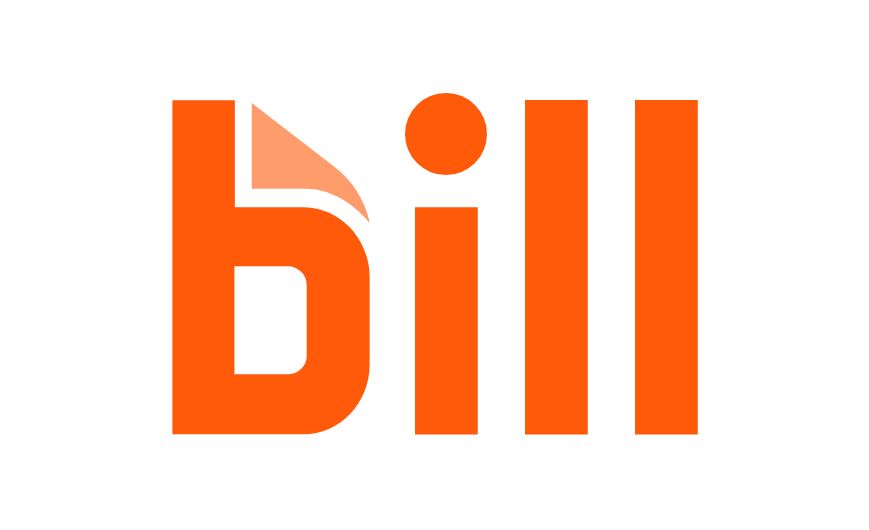The American Dental Hygienists’ Association (ADHA) has released a white paper that underscores the ability of the dental hygienist to perform dental hygiene diagnosis as part of the oral-care team working to ensure that every patient is evaluated and treated based on individual oral health needs. According to the ADHA paper, dental hygiene diagnosis is an essential part of dental hygiene care and scope of practice, yet confusion exists on how to implement it into daily practice.
The ADHA created the white paper to help practicing dental hygienists understand and use dental hygiene diagnoses in their daily practice across a wide variety of care settings. In addition, the organization is providing tools and resources for dental hygiene educators to help them teach dental hygiene diagnosis to students. The organization is the profession’s national voice informing policymakers as they consider legislation related to the dental hygiene scope of practice. The ADHA Dental Hygiene Diagnosis white paper can be downloaded at www.eiseverywhere.com/esurvey/index.php?surveyid=40570.
ADHA defines dental hygiene diagnosis as “the identification of an individual’s health behaviors, attitudes, and oral health care needs for which a dental hygienist is educationally qualified and licensed to provide. The dental hygiene diagnosis requires evidence-based critical analysis and interpretation of assessments to reach conclusions about the patient’s dental hygiene treatment needs.”
“Through dental hygiene diagnoses, dental hygienists educate patients on behaviors that minimize risks of oral infections, help detect risk factors for infectious diseases and cancers of the head and neck,” said ADHA president Betty Kabel, RDH, BS. “This elevates the role of the dental hygienist within the overall health care system, as we seek to expand the access to oral care. It’s important to utilize the dental hygiene diagnoses regularly and consistently to ensure optimal care for our patients.”
While dental hygienists’ rigorous education prepares them to provide preventive and therapeutic oral health services, the profession’s scope of practice varies from state to state. ADHA emphasizes that it is important for dental hygienists to fully utilize their education to provide oral health care services that fall within their scope, especially for populations that lack adequate access to oral health care services. The organization also advocates for using the new white paper as a resource by policymakers involved in decisions about state practice acts.
For more information, you can visit www.adha.org.
(Source: ADHA)
CHICAGO, Ill., USA: With the release of Oral Health America’s white paper, An Oral Health Benefit in Medicare Part B: It’s Time to Include Oral Health ...
NEW YORK, N.Y., USA: Research by the American Dental Hygienists’ Association showcases the evolution of the dental hygiene profession, the need to ...
BING Innovations, maker of the revolutionary DentalVibe Injection Comfort System, have announced the release of a new white paper, Special Needs Dentistry: ...
The dental profession is becoming more aware of the benefits of xylitol. Dental publications, live educational courses and online courses are buzzing with ...
JACKSONVILLE, Fla., USA: Once upon a time, in the land of bridges and crowns, a purple-cloaked prophy queen reigned over her happy subjects. So beloved was ...
The American Dental Hygienists’ Association (ADHA) will serve as the host for North America’s largest meeting of dental hygiene professionals at...
BALTIMORE, Md., USA: By hosting the first national conference on oral and systemic health in Baltimore on Dec. 10, the University of Maryland, Baltimore ...
The buzz of excitement inside the Javitz Convention Center spills outside and onto the streets of one of America’s greatest cities, New York. From ...
The Rhode Island fire of 2003 was the fourth deadliest in U.S. nightclub history. Ninety-six people perished on the night of the fire, four more in the ...
PHOENIX, AZ, USA: It was a warm, fun and friendly atmosphere in Phoenix at the 89th Annual ADHA Meeting. While temperatures reached 102 degrees, it was cool...
Live webinar
Mon. 22 April 2024
10:00 AM EST (New York)
Prof. Dr. Erdem Kilic, Prof. Dr. Kerem Kilic
Live webinar
Tue. 23 April 2024
1:00 PM EST (New York)
Live webinar
Wed. 24 April 2024
8:00 AM EST (New York)
Dr. Yin Ci Lee BDS (PIDC), MFDS RCS, DClinDent Prosthodontics, Dr. Ghida Lawand BDS, MSc, Dr. Oon Take Yeoh, Dr. Edward Chaoho Chien DDS, DScD
Live webinar
Wed. 24 April 2024
1:00 PM EST (New York)
Live webinar
Fri. 26 April 2024
12:00 PM EST (New York)
Live webinar
Mon. 29 April 2024
12:30 PM EST (New York)
Prof. Roland Frankenberger Univ.-Prof. Dr. med. dent.
Live webinar
Tue. 30 April 2024
1:00 PM EST (New York)



 Austria / Österreich
Austria / Österreich
 Bosnia and Herzegovina / Босна и Херцеговина
Bosnia and Herzegovina / Босна и Херцеговина
 Bulgaria / България
Bulgaria / България
 Croatia / Hrvatska
Croatia / Hrvatska
 Czech Republic & Slovakia / Česká republika & Slovensko
Czech Republic & Slovakia / Česká republika & Slovensko
 France / France
France / France
 Germany / Deutschland
Germany / Deutschland
 Greece / ΕΛΛΑΔΑ
Greece / ΕΛΛΑΔΑ
 Italy / Italia
Italy / Italia
 Netherlands / Nederland
Netherlands / Nederland
 Nordic / Nordic
Nordic / Nordic
 Poland / Polska
Poland / Polska
 Portugal / Portugal
Portugal / Portugal
 Romania & Moldova / România & Moldova
Romania & Moldova / România & Moldova
 Slovenia / Slovenija
Slovenia / Slovenija
 Serbia & Montenegro / Србија и Црна Гора
Serbia & Montenegro / Србија и Црна Гора
 Spain / España
Spain / España
 Switzerland / Schweiz
Switzerland / Schweiz
 Turkey / Türkiye
Turkey / Türkiye
 UK & Ireland / UK & Ireland
UK & Ireland / UK & Ireland
 International / International
International / International
 Brazil / Brasil
Brazil / Brasil
 Canada / Canada
Canada / Canada
 Latin America / Latinoamérica
Latin America / Latinoamérica
 China / 中国
China / 中国
 India / भारत गणराज्य
India / भारत गणराज्य
 Japan / 日本
Japan / 日本
 Pakistan / Pākistān
Pakistan / Pākistān
 Vietnam / Việt Nam
Vietnam / Việt Nam
 ASEAN / ASEAN
ASEAN / ASEAN
 Israel / מְדִינַת יִשְׂרָאֵל
Israel / מְדִינַת יִשְׂרָאֵל
 Algeria, Morocco & Tunisia / الجزائر والمغرب وتونس
Algeria, Morocco & Tunisia / الجزائر والمغرب وتونس
 Middle East / Middle East
Middle East / Middle East
:sharpen(level=0):output(format=jpeg)/up/dt/2024/04/web_Bassi.jpg)
:sharpen(level=0):output(format=jpeg)/up/dt/2024/04/web_Munce.jpg)
:sharpen(level=0):output(format=jpeg)/up/dt/2024/04/web_Seiler.jpg)
:sharpen(level=0):output(format=jpeg)/up/dt/2024/04/Study-points-to-lack-of-formal-education-on-cannabis-in-dentistry.jpg)
:sharpen(level=0):output(format=jpeg)/up/dt/2024/04/Immediate-full-arch-zirconia-implant-therapy-utilising-the-power-of-robotic-assistance-and-digital-scanning_Fig-1-preophoto_title.jpg)












:sharpen(level=0):output(format=png)/up/dt/2022/01/HASSBIO_Logo_horizontal.png)
:sharpen(level=0):output(format=png)/up/dt/2023/11/Patent%E2%84%A2-Implants-_-Zircon-Medical.png)
:sharpen(level=0):output(format=png)/up/dt/2024/01/UnionTech-Logo-Hub.png)
:sharpen(level=0):output(format=png)/up/dt/2014/02/3shape.png)
:sharpen(level=0):output(format=png)/up/dt/2014/02/EMS.png)
:sharpen(level=0):output(format=png)/up/dt/2014/02/MIS.png)
:sharpen(level=0):output(format=jpeg)/up/dt/e-papers/330729/1.jpg)
:sharpen(level=0):output(format=jpeg)/up/dt/e-papers/330727/1.jpg)
:sharpen(level=0):output(format=jpeg)/up/dt/e-papers/330725/1.jpg)
:sharpen(level=0):output(format=jpeg)/up/dt/e-papers/325039/1.jpg)
:sharpen(level=0):output(format=jpeg)/up/dt/e-papers/325007/1.jpg)
:sharpen(level=0):output(format=jpeg)/up/dt/e-papers/313543/1.jpg)
:sharpen(level=0):output(format=jpeg)/up/dt/2017/01/8ca4d3f0410f438fc5cfbfa4a7ba7d81.jpg)

:sharpen(level=0):output(format=jpeg)/up/dt/2024/04/web_Bassi.jpg)
:sharpen(level=0):output(format=gif)/wp-content/themes/dt/images/dt-user.gif)
:sharpen(level=0):output(format=jpeg)/up/dt/2018/08/www.sxc_.hu_1062252_76239972.jpg)
:sharpen(level=0):output(format=jpeg)/up/dt/2017/01/e8f4a23b27b9585d10d7d22b53a22f45.jpg)
:sharpen(level=0):output(format=jpeg)/up/dt/2017/01/2b39c12eb3bcd943bd3caef4a80292dd.jpg)
:sharpen(level=0):output(format=jpeg)/up/dt/2010/08/214d2fc1a3d803199e5db136521ffbd4.jpg)
:sharpen(level=0):output(format=jpeg)/up/dt/2017/08/9b197a8ee1f7ddbe3e139da3d1251eea.jpg)
:sharpen(level=0):output(format=jpeg)/up/dt/2017/01/c503336d3eb4a165359365a70dbdc4ec.jpg)
:sharpen(level=0):output(format=jpeg)/up/dt/2013/01/bb4b1d98da754d78dde6cb3627e4421d.jpg)
:sharpen(level=0):output(format=jpeg)/up/dt/2023/11/NY-travel.jpg)
:sharpen(level=0):output(format=jpeg)/up/dt/2012/07/23669a43c19be323565c6dd7412b58c6.jpg)
:sharpen(level=0):output(format=jpeg)/up/dt/2017/01/4df51eabddbd8182425ca8cac20c039f.jpg)





:sharpen(level=0):output(format=jpeg)/up/dt/2024/04/web_Bassi.jpg)
:sharpen(level=0):output(format=jpeg)/up/dt/2024/04/web_Munce.jpg)
:sharpen(level=0):output(format=jpeg)/up/dt/2024/04/web_Seiler.jpg)
:sharpen(level=0):output(format=jpeg)/up/dt/e-papers/330727/1.jpg)
:sharpen(level=0):output(format=jpeg)/up/dt/e-papers/330725/1.jpg)
:sharpen(level=0):output(format=jpeg)/up/dt/e-papers/325039/1.jpg)
:sharpen(level=0):output(format=jpeg)/up/dt/e-papers/325007/1.jpg)
:sharpen(level=0):output(format=jpeg)/up/dt/e-papers/313543/1.jpg)
:sharpen(level=0):output(format=jpeg)/up/dt/e-papers/330729/1.jpg)
:sharpen(level=0):output(format=jpeg)/up/dt/e-papers/330729/2.jpg)
:sharpen(level=0):output(format=jpeg)/wp-content/themes/dt/images/3dprinting-banner.jpg)
:sharpen(level=0):output(format=jpeg)/wp-content/themes/dt/images/aligners-banner.jpg)
:sharpen(level=0):output(format=jpeg)/wp-content/themes/dt/images/covid-banner.jpg)
:sharpen(level=0):output(format=jpeg)/wp-content/themes/dt/images/roots-banner-2024.jpg)
To post a reply please login or register